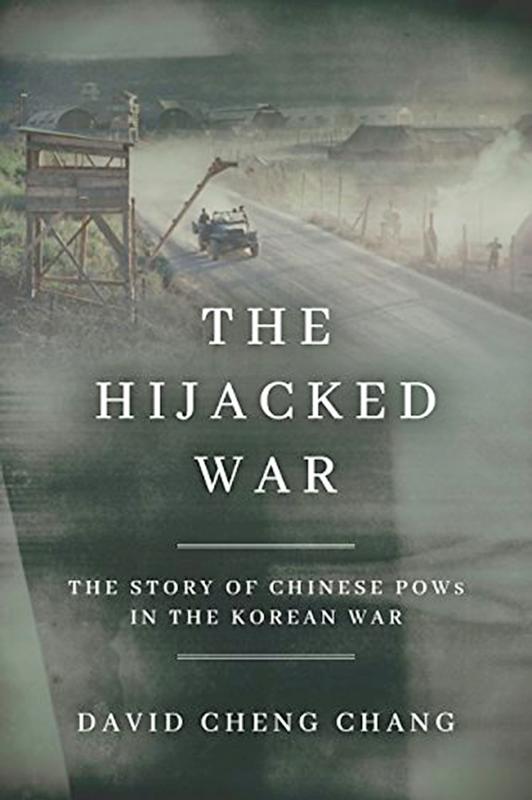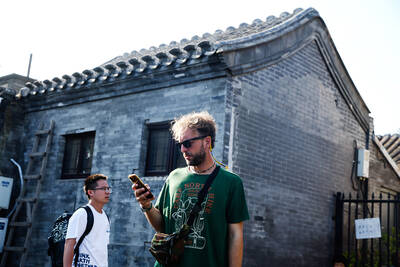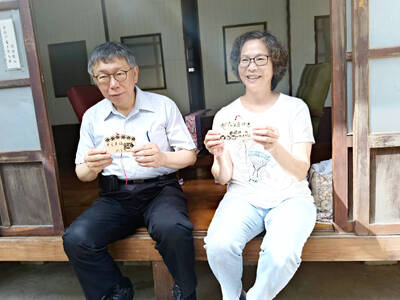Outside historical circles, the name Li Da-an (李大安) will be familiar to few Taiwanese. However, there was a time where this lowly soldier was feted as a national hero in Chinese Nationalist Party (KMT) propaganda.
As one of 155,000 inmates in the UN’s POW camp on South Korea’s Geoje island, Li was responsible for barbaric murders, mutilations and beatings between May 1951 and April 1952. Yet with the publication of The History of the Anti-communist Fighters’ Struggles by the KMT government in 1955, Li and his brutish henchmen were hailed as loyal patriots.
While this hagiography did not completely hide the gory details, it portrayed the violence as a necessary evil. The extent of the horror did not emerge until much later. Although previous works have detailed the excesses of the Chinese POW camps, none offer such a meticulous and politically neutral account as that found in this magnificent book.

In Compound 72, where Li’s prison guards held sway, it was not just pro-communist elements who received the thick end of the cudgel. Inmates of all stripes were routinely terrorized and forcibly tattooed with Nationalist slogans. Some of these men are still alive in Taiwan.
Red-leaning internees who escaped Li’s clutches when relocated to other compounds sliced the Nationalist branding from their bodies with rusty razors, causing festering infections that left grotesque scars. Those who resisted the body modifications — often simply from fear of repatriation to China where the tattoos guaranteed reprisals — or refused to recant their ideals were tortured or worse.
On April 8, the eve of a screening procedure at which Mandarin-speaking UN Command personnel would determine the destination of released POWS, an orgy of violence erupted. The prison guards were adamant that everyone would make the “right” decision on the morrow and choose Taiwan as their preferred destination.
But some would not be swayed. One of Li’s first victims was a recalcitrant named Lin Xuebo (林學逋), a former interpreter and English instructor with the Chinese People’s Volunteer Army (CPV) who had interrogated American POWS in May 1951 before his capture.
Resisting the demand to renounce his creed, Lin bellowed his fealty to Chairman Mao Zedong (毛澤東) and the Chinese Communist Party.
“Before Lin could shout more slogans, Li stabbed him in the chest,” Chang writes. “Li cut out Lin’s heart and displayed it to the horrified crowd, a witness in the crowd recalled.”
It was not the only time Li performed such butchery.
Such were the POWs whose refusal to return to China “hijacked” the Korean War. But behind the violence of the camps is a subtext of scarcely credible ineptitude and willful ignorance on the part of then-US President Harry Truman’s administration. Chang exposes this debacle with aplomb.
The war lasted just over three years and claimed between 3.5 million and five million lives. Remarkably, armistice talks took up more than two thirds of that period, costing the lives of a further 140,000 North Korean civilians (by conservative estimates), 90,000 CPV personnel and 12,300 American soldiers.
Of the more than 21,000 Chinese POWS, 14,220 “chose” to go to Taiwan. Based on these figures, Chang argues “in an imprecise fashion,” that US efforts to guarantee one POW’s “right” to refuse repatriation to China came at a cost of almost one American soldier’s life.
“On the other side,” writes Chang, “to deny such a ‘right’ to one individual Chinese prisoner, more than six Chinese soldiers, 10 North Korean civilians, and an unspecified number of North Korean troops were killed.”
The circumstances that created these “unsettling equations” have remained buried. Chang offers compelling explanations for the reticence of both sides to unearth them. For the Chinese, it was straightforward: The admission that most POWS had refused repatriation was a huge loss of face and dent to the image of a proud and passionate volunteer force.
The CPV was a volunteer army in name only. By Chinese Premier Zhou Enlai’s (周恩來) own reckoning, former KMT troops represented 70 to 80 percent of the People’s Liberation Army forces as a whole by 1950.
The exact figure for the CPV is unknown, but among those who demanded repatriation, almost 67 percent had previously been KMT soldiers. While there may have been some truth to the KMT claim that these men had been sent to North Korea as cannon fodder, most had undergone rigid re-education and were considered loyal communists.
Chang emphasizes that choices over repatriation cut across political ideology and depended more on an individual’s background and personal experiences. Those who had suffered under land reform were likelier to desert the CPV once over the border and, later, join the likes of Li and his sworn Nationalist blood brothers in the camps on Geoje. Class appears to have been a factor.
On the American side, the absence of historical attention to the POW issue is also easily explained on one level: The revelation that 45 percent of American casualties had occurred while Chinese and American representatives wrangled over the fate of Chinese POWs would not sit well with the public.
A more complex factor was an unwillingness to expose the catastrophic interplay of Truman’s naive personal morality, a bungled psy-ops re-indoctrination program, and an apparent obliviousness to the fact that Taiwan was the only realistic destination for most of the Nationalist POWs.
As Chang reveals, Taiwanese interpreters and personnel served as a conduit between the camps and Taipei, helping to stoke the violence in the camp. The only winner was Chiang Kai-shek (蔣介石), who milked the propaganda of the anti-communist stalwarts for all it was worth.
Among the “returning” heroes, Li Da-an was notable by his absence. Circumstances — perhaps engineered by his victims — had dictated that his fate lay elsewhere.
In laying bare the history that saw such men canonized in KMT folklore, Chang has produced a magisterial work that astounds at turns through the visceral power of its set pieces and the perspicacity of its analysis.

Climate change, political headwinds and diverging market dynamics around the world have pushed coffee prices to fresh records, jacking up the cost of your everyday brew or a barista’s signature macchiato. While the current hot streak may calm down in the coming months, experts and industry insiders expect volatility will remain the watchword, giving little visibility for producers — two-thirds of whom farm parcels of less than one hectare. METEORIC RISE The price of arabica beans listed in New York surged by 90 percent last year, smashing on Dec. 10 a record dating from 1977 — US$3.48 per pound. Robusta prices have

A few years ago, getting a visa to visit China was a “ball ache,” says Kate Murray. The Australian was going for a four-day trade show, but the visa required a formal invitation from the organizers and what felt like “a thousand forms.” “They wanted so many details about your life and personal life,” she tells the Guardian. “The paperwork was bonkers.” But were she to go back again now, Murray could just jump on the plane. Australians are among citizens of almost 40 countries for which China now waives visas for business, tourism or family visits for up to four weeks. It’s

The resignation of Taiwan People’s Party (TPP) co-founder Ko Wen-je (柯文哲) as party chair on Jan. 1 has led to an interesting battle between two leading party figures, Huang Kuo-chang (黃國昌) and Tsai Pi-ru (蔡壁如). For years the party has been a one-man show, but with Ko being held incommunicado while on trial for corruption, the new chair’s leadership could be make or break for the young party. Not only are the two very different in style, their backgrounds are very different. Tsai is a co-founder of the TPP and has been with Ko from the very beginning. Huang has

Beyonce on Sunday finally won the Grammy for the year’s best album for her culture-shaking Cowboy Carter, as rapper Kendrick Lamar posted a clean sweep on a night that served as a love letter to fire-ravaged Los Angeles. Chappell Roan, Charli XCX, Doechii and Sabrina Carpenter emerged as big winners at the performance-heavy gala, while heavyweights Taylor Swift and Billie Eilish went home empty-handed. Beyonce’s win for Cowboy Carter now makes her the most nominated, most decorated artist at the awards show ever — as well as the first Black woman to claim the top prize in this century. The triumph was all